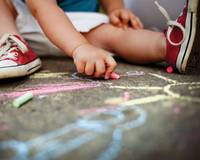7 soft skills your child can acquire through STEM learning
Learning STEM at a very young age is not solely for career training in the Science, Technology, Engineering, and Math field but also for the cognitive development of preschoolers. And for it to be effective, the method of teaching should always be age-appropriate.
For children aged five and below, play-based learning is the most effective way of learning. This is where the technicality of the STEM subject will not be discussed, but the context will somehow be tackled. Activities like building blocks, shadow or water playing, and rolling toys on ramps are some of the exercises that you can incorporate into STEM learning. These will help toddlers acquire the soft skills that are beneficial for their growth. What are these soft skills that we keep on talking about?
Resilience
STEM revolves around experimentation. And, in every experiment, failing is inevitable. But from there lies learning—whenever we fail, we also learn to avoid making the same mistake again.
As we try to engage our toddlers in little STEM experiments, we also teach them how things work in reality—that failure is part of every successful outcome, and resiliency is a skill that keeps us thriving to reach it. Learning how to deal with every downfall and look for new approaches to problems is an amazing skill that children can use in life as they grow.
Focus
Related to resilience is focus. It is one factor that affects the resiliency of a person. Without it, there will never be an eagerness to reach a certain goal.
For instance, when you engage your toddler in STEM activities like building blocks where they need to stack the blocks correctly. With them being focused on keeping the building stable, they will be extra careful in stacking the blocks, and if they fall, they will keep thinking of new methods to help them achieve their goal.
Critical thinking
When it comes to working on STEM subjects, children are being exposed to challenges where they need to utilize their knowledge and imagination to solve certain problems. It is known as critical thinking, and it’s one of the primary benefits one can develop when dealing with the complexity of the STEM subject.
Every time students encounter a difficulty or a problem, they will use their critical thinking to examine the subject and consider potential solutions. And through cross-curricular projects, they’ll also be able to look for different points of view where they can analyze the tiniest details while imagining the bigger picture to come up with a straightforward resolution.
Interdisciplinary skills
One of the new approaches in STEM learning is through interdisciplinary methods. They help children develop transferrable skills and learn across subjects through experiments and activities.
With STEM education, children will be equipped with real-world life skills that they can use as they grow. STEM prepares them for encountering/handling future life problems and helps them understand that the world is as complex as the subject itself.
Creativity
Another soft skill that children can develop while learning STEM is creativity. STEM activities, experiments, and problem-solving all require creativity.
When you expose your little ones to situational exercises, allowing them to use their imagination, you also boost their creativity as they will find little ways to deal with those challenges. It is an important skill that your toddlers can use in life as they face different kinds of problems as they grow.
Assertiveness
While confidence is more of a mindset, having control of it is a skill, and it is called assertiveness. Assertiveness helps children express themselves effectively and in a disciplined manner.
Everyone has a different way of thinking, which means that we also have various ways of working through a problem. So, if children are given STEM experiments, they will also come up with different solutions. And for instance, if some children get the right answers and others don’t on a certain problem, being assertive to those children who weren’t able to get it correctly will help them cope. Those who got the right solutions will encourage their classmates to stay confident in making different solutions that will work. And when children learn to be assertive, they will also have effective communication with each other, which is our next soft skill.
Communication and teamwork
Sometimes, we cannot solve problems alone. We will always need someone who has a different way of looking at things to solve a particular problem, and STEM is one subject that can also bring us to this situation.
STEM learning encourages teamwork, where children need to work together and come up with a perfect solution. And for it to work, communicating with one another is required. So, if we include collaborative activities in STEM learning, your toddler will be able to learn how to exchange ideas with other children and help each other.
The bottom line
After knowing the soft skills that your child can acquire in STEM education, we can say that learning isn’t only limited to the subject itself. Exposing your toddler to STEM learning will help them develop the skills they can use in understanding the subject and real-life situations. And since education always starts at home, engaging families in their child’s learning is the best way to introduce STEM and develop amazing skills.
Chatty Garrate is a freelance writer from Manila. She finds joy in inspiring and educating others through writing. That's why aside from her job as a language evaluator for local and international students, she spends her leisure time writing about various topics such as lifestyle, technology, and business.
More by Chatty
Chatty Garrate
August 10th, 2022
7 mins
Related Articles

The Benefits of Loose Parts Play for Young Children
December 10th, 2025 | Maddie Hutchison


